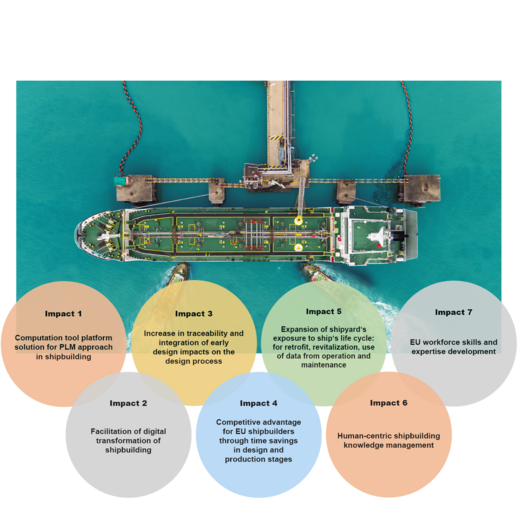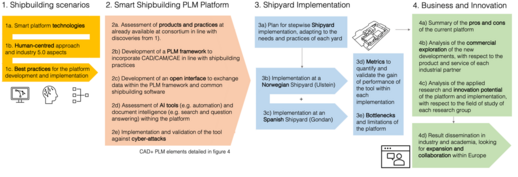SEUS
Smart European Shipbuilding
The Smart European Shipbuilding project (SEUS) aims to create a framework for European shipyards by architecting and developing an integrated platform for a combined solution incorporating CAE, CAD, CAM, and PDM software and testing it at shipyards. The new platform solution will be built with the best EU shipbuilding expertise provided by academic and industrial consortium participants. It will develop novel practices for human-centric knowledge management, data-driven AI design elements, intelligent technology, and Industry 5.0 concept for shipbuilding.
- Project start: January 2023
- Runtime: 4 Years
- Funding amount: €7 million
- Number of partners: 8
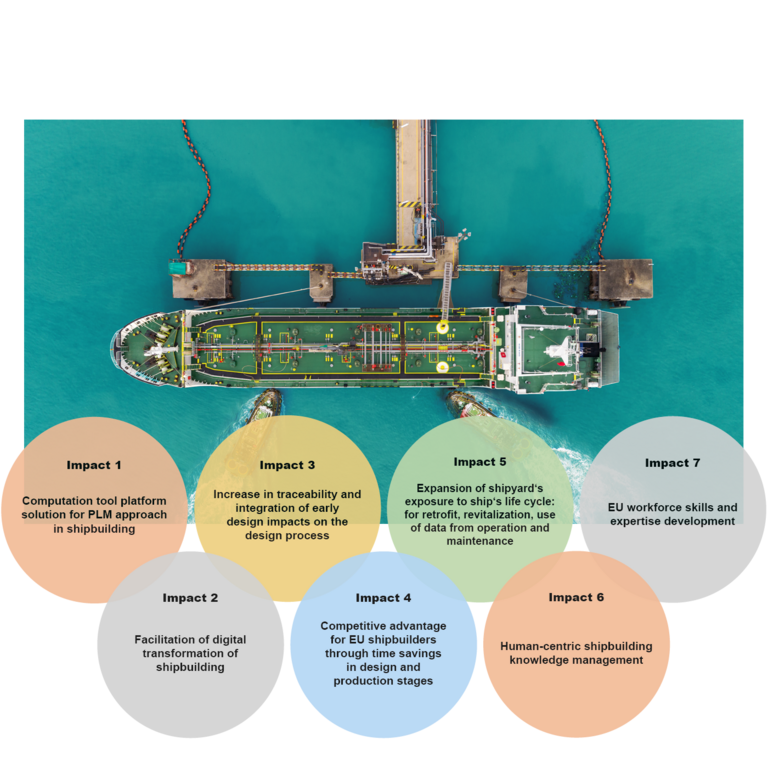
Objectives
Best practices and people at the centre of development
The SEUS platform is based on best practices of workflows and use cases in European shipbuilding, with a special focus on smart technologies and the concept of Industry 5.0, building an improvement of the human-centred competitiveness of shipbuilding and taking into account the different values of stakeholders, including shipyard workers, ship owners, operators, users/passengers and shipbuilders in general.
One up-to-date data base – multiple interconnected systems
Develop a shipbuilding-specific PLM platform with defined data model and selected elements of CAE/CAD/CAM and PDM solutions creates flexibility that supports multiple instances of workflows, facilitates rapid early designs, and is suitable for implementing AI tools and virtual prototyping. The trade-off will be between ensuring openness and interoperability of the platform while guaranteeing cyber security.
Industrially deployable software used directly by the shipyards
Testing and implementation in an industrial environment – the digital shipyard – ensures that the SEUS platform can be immediately deployed in ongoing operations. The necessary quantification of the added value of the developed platform is created by the continuous user feedback and made usable as a project result. Likewise, the formulation of concrete business models is part of the utilisation and dissemination of the project outcomes.
Objectives
Best practices and people at the centre of development
The SEUS platform is based on best practices of workflows and use cases in European shipbuilding, with a special focus on smart technologies and the concept of Industry 5.0, building an improvement of the human-centred competitiveness of shipbuilding and taking into account the different values of stakeholders, including shipyard workers, ship owners, operators, users/passengers and shipbuilders in general.
One up-to-date data base – multiple interconnected systems
Develop a shipbuilding-specific PLM platform with defined data model and selected elements of CAE/CAD/CAM and PDM solutions creates flexibility that supports multiple instances of workflows, facilitates rapid early designs, and is suitable for implementing AI tools and virtual prototyping. The trade-off will be between ensuring openness and interoperability of the platform while guaranteeing cyber security.
Industrially deployable software used directly by the shipyards
Testing and implementation in an industrial environment – the digital shipyard – ensures that the SEUS platform can be immediately deployed in ongoing operations. The necessary quantification of the added value of the developed platform is created by the continuous user feedback and made usable as a project result. Likewise, the formulation of concrete business models is part of the utilisation and dissemination of the project outcomes.
Objectives
Best practices and people at the centre of development
The SEUS platform is based on best practices of workflows and use cases in European shipbuilding, with a special focus on smart technologies and the concept of Industry 5.0, building an improvement of the human-centred competitiveness of shipbuilding and taking into account the different values of stakeholders, including shipyard workers, ship owners, operators, users/passengers and shipbuilders in general.
One up-to-date data base – multiple interconnected systems
Develop a shipbuilding-specific PLM platform with defined data model and selected elements of CAE/CAD/CAM and PDM solutions creates flexibility that supports multiple instances of workflows, facilitates rapid early designs, and is suitable for implementing AI tools and virtual prototyping. The trade-off will be between ensuring openness and interoperability of the platform while guaranteeing cyber security.
Industrially deployable software used directly by the shipyards
Testing and implementation in an industrial environment – the digital shipyard – ensures that the SEUS platform can be immediately deployed in ongoing operations. The necessary quantification of the added value of the developed platform is created by the continuous user feedback and made usable as a project result. Likewise, the formulation of concrete business models is part of the utilisation and dissemination of the project outcomes.
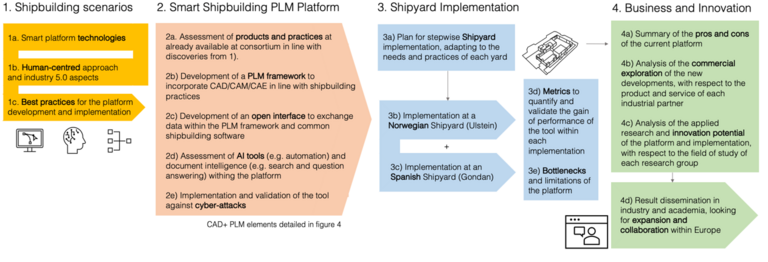
Motivation
The maritime domain and shipbuilding industry have a significant impact on the European economy. It enables society’s waterborne logistics through shipping, transportation, and tourism activities, technological development through requiring the highest expertise, and driving environmental sustainability. Industrial technology for the design and construction of high value and complex vessels is interconnected with the development of new power solutions, machinery, and computational tools. Computational tools constitute the core of digitization. They have a sizeable transformative potential in the design and construction process, the quality and innovativeness of solutions used, the investment required to build and maintain ships through their life cycles, the skills and expertise of shipbuilders, as well as the competitiveness of the EU shipbuilding industry, thereby significantly impacting the future of the EU.
Motivation
The maritime domain and shipbuilding industry have a significant impact on the European economy. It enables society’s waterborne logistics through shipping, transportation, and tourism activities, technological development through requiring the highest expertise, and driving environmental sustainability. Industrial technology for the design and construction of high value and complex vessels is interconnected with the development of new power solutions, machinery, and computational tools. Computational tools constitute the core of digitization. They have a sizeable transformative potential in the design and construction process, the quality and innovativeness of solutions used, the investment required to build and maintain ships through their life cycles, the skills and expertise of shipbuilders, as well as the competitiveness of the EU shipbuilding industry, thereby significantly impacting the future of the EU.
Motivation
The maritime domain and shipbuilding industry have a significant impact on the European economy. It enables society’s waterborne logistics through shipping, transportation, and tourism activities, technological development through requiring the highest expertise, and driving environmental sustainability. Industrial technology for the design and construction of high value and complex vessels is interconnected with the development of new power solutions, machinery, and computational tools. Computational tools constitute the core of digitization. They have a sizeable transformative potential in the design and construction process, the quality and innovativeness of solutions used, the investment required to build and maintain ships through their life cycles, the skills and expertise of shipbuilders, as well as the competitiveness of the EU shipbuilding industry, thereby significantly impacting the future of the EU.
Project Partners
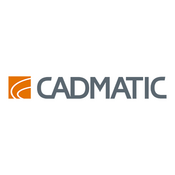
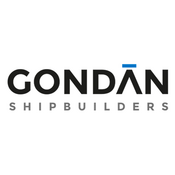
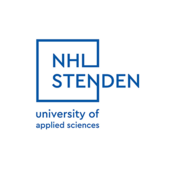
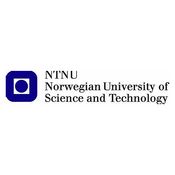
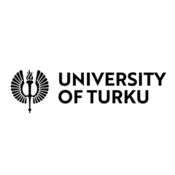
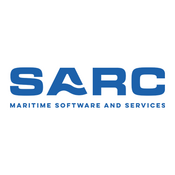
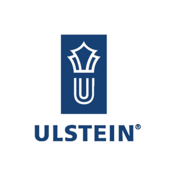
This project was funded by the EU Horizon Europe (HORIZON) framework program under Funding Agreement no. 101096224.
